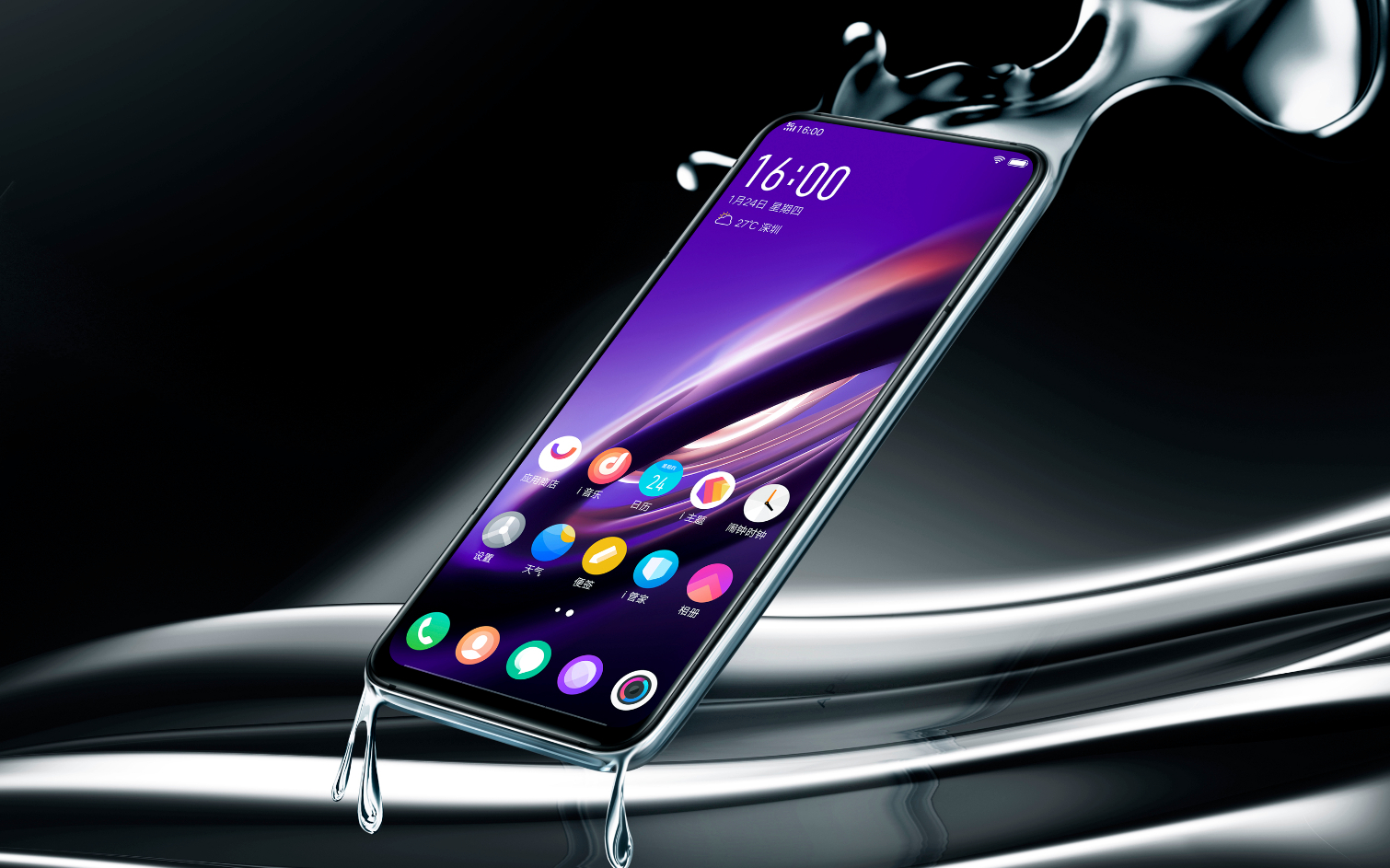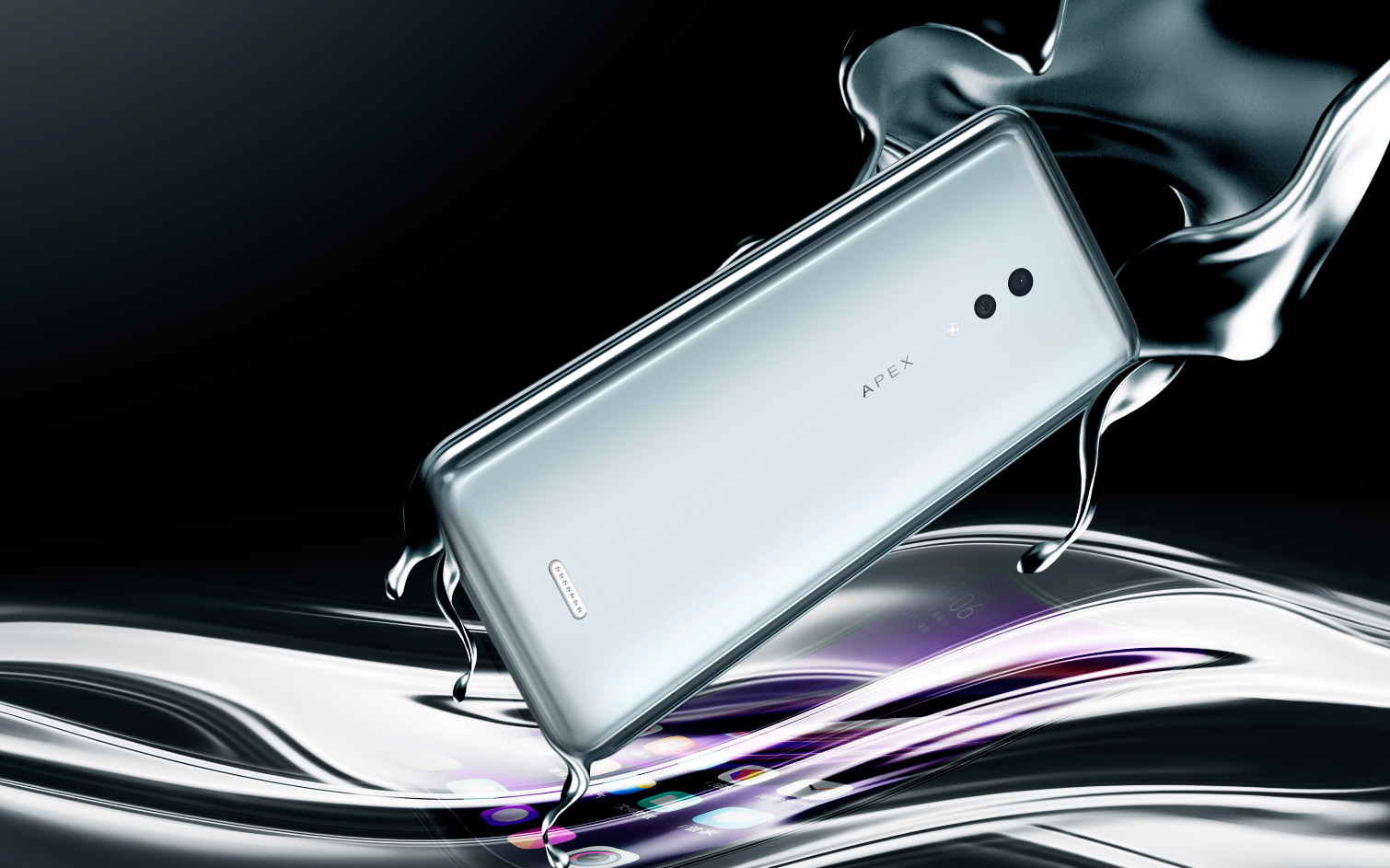Vivo's New Apex Concept Offers a Peek at the Future of Phones
Vivo's prototype couples full-display fingerprint sensing with magnetic ports, 5G connectivity and screen-conducting audio for the most cutting-edge handset we've seen yet.
Every year, hundreds of thousands of patrons flock to auto shows all around the world not so much to see existing vehicles already on the road, but the concept cars — far flung, futuristic sneak peeks at where a manufacturer might be heading, whether it's in the next year, next decade or next century. It's not a practice we're used to seeing in the mobile realm, but Vivo is changing that with its Apex 2019 concept handset.

Announced today (Jan. 24) in Beijing, the Apex 2019 is packed with quite a few technologies you don't often see in production phones. That includes full-screen fingerprint sensing, which effectively transforms the entirety of the device's display into one gigantic biometric scanner. Additionally, there are no camera, proximity or ambient light sensors on the face of the phone — allowing for an uninterrupted sheet of glass and mostly consistent bezels, save for the slight chin along the bottom edge.
The Apex's lack of speaker grilles has necessitated a rethink of the audio delivery system. Much like the prototype device Vivo brought to Mobile World Congress last year, this new concept re-purposes the display as a giant amplifier, by vibrating the glass to convey sound. This system worked quite well when we demoed it previously, so we're hoping Vivo's closer to bringing it to the market this time around.
MORE: All the Incoming Foldable Phones of 2019
Interestingly, the Apex 2019 forgoes a conventional USB Type-C port for magnetic pins on the back, that Vivo says can be used for both charging and data transfer. There's no word on whether or not the device supports wireless charging, but given that it's constructed entirely from one nearly-seamless sheet of silvery glass, we don't see a reason why that feature wouldn't be included.

Rather than employing a conventional glass sandwich architecture, the Apex's curved "Waterdrop" glass, as Vivo has termed it, pours over the sides to conceal a touch-sensitive frame. Vivo has combined pressure sensors with capacitive ones to replace the physical power and volume keys you'd normally expect to find on the side of a phone. The Apex isn't the first phone to replace those buttons with sensors — Meizu touted a buttonless, portless phone of its own called the Meizu Zero a day earlier. HTC's polarizing U12+ flagship also did away with buttons, though ideally Vivo's implementation would be much more responsive than HTC's buggy effort.
Last but certainly not least, the Apex 2019 is fitted with a 5G radio. With any luck, we'll reflect on this particular aspect of the Apex later in 2019 as one of the device's groundbreaking features that actually came to pass. Vivo says it needed to improve the efficiency of its motherboard design to allow more room for the phone's 5G modem and antennas, which currently consume more space than conventional 4G modules.
Sign up to get the BEST of Tom's Guide direct to your inbox.
Get instant access to breaking news, the hottest reviews, great deals and helpful tips.
We look forward to getting some hands-on time with Vivo's latest concept in all its liquid metal glory at Mobile World Congress in Barcelona, which begins Feb. 25. Although the Apex 2019 is a concept, Vivo has built a reputation in its brief history for bringing its wildest ideas to production in surprisingly short time — so it's quite possible you won't have to wait too long before getting a chance to buy one yourself.
Adam Ismail is a staff writer at Jalopnik and previously worked on Tom's Guide covering smartphones, car tech and gaming. His love for all things mobile began with the original Motorola Droid; since then he’s owned a variety of Android and iOS-powered handsets, refusing to stay loyal to one platform. His work has also appeared on Digital Trends and GTPlanet. When he’s not fiddling with the latest devices, he’s at an indie pop show, recording a podcast or playing Sega Dreamcast.
